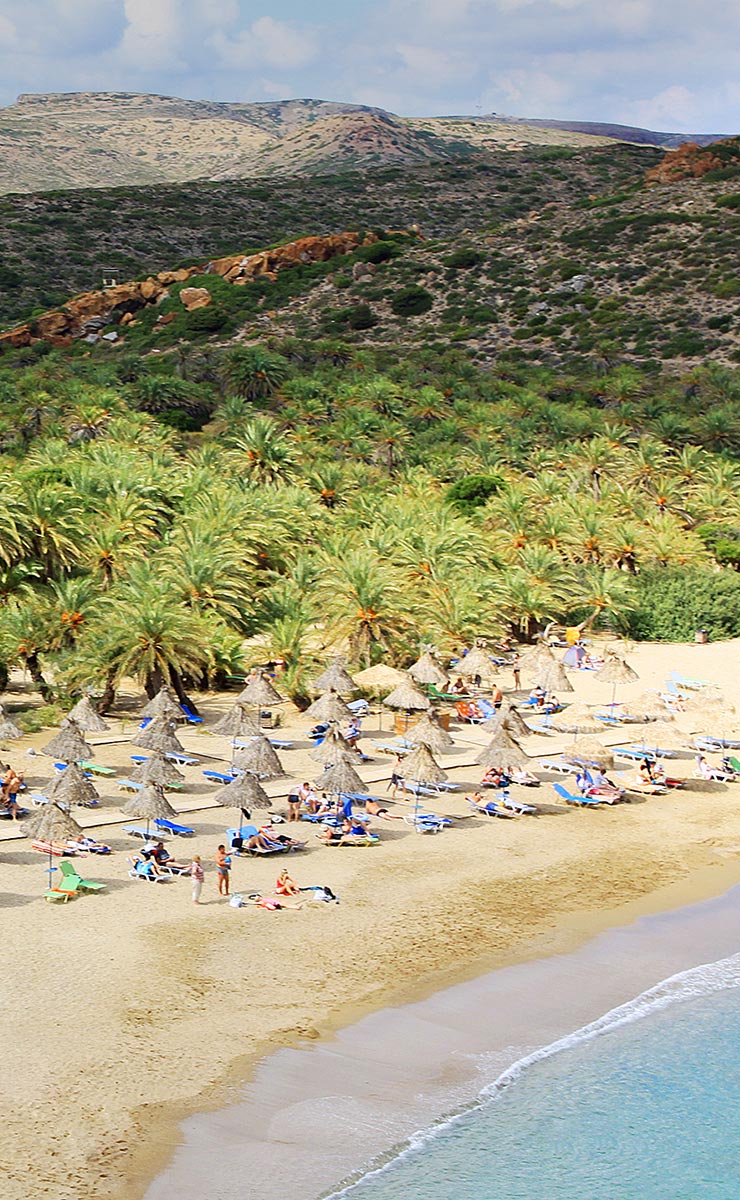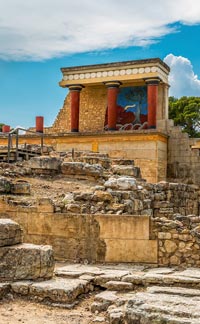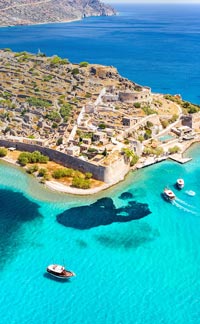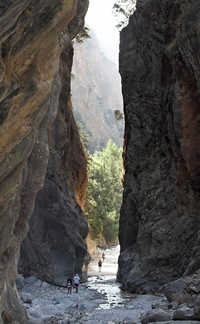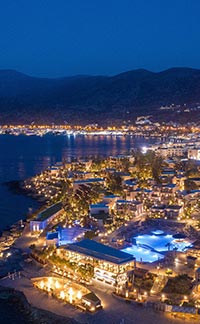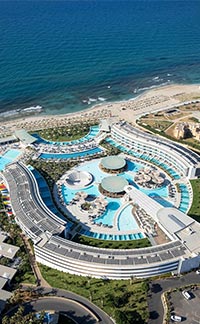You can't get much further northeast in Crete than the palm forest of Vai. Just 8.5 km from the island's extreme northeast point, this is the largest native palm forest in Europe. Like much of northeast Crete, the 250,000 square meter (62 acre) forest belongs to the Toplou monastery. Back in the 1970's, when the hippies who had occupied the beachfront caves at Matala on the south coast were evicted by the government, they gravitated here. It wasn't long before they had polluted the local environment so much that they were evicted again. The monastery had the property fenced off and opened it to visitors only during daylight hours.
The trees are native to Crete, despite romantic stories of pirates camping out, eating dates, and the discarded pits taking root, or of Phoenician sailors planting the trees in antiquity. These Cretan date palms lend a distinctive tropical vibe to the place. The beach is wide and sandy, and the waters are clear and beautiful.
The forest is protected by the EU and Greece's forestry service, so any activity which may endanger them, such as overnight camping and starting fires on the beach, is prohibited.
The beach is very popular during the summer, and it can be difficult to find a place to park (you have to pay), or a spot on the beach. A lot of people park on the side of the road to avoid the lot fees.
The beach offers sun beds and thatched umbrellas. You can also find shade under the palm trees, which come right up to the edge of the sand. At one end a flight of steps rise to a cafeteria and a terrace from which you can survey the entire area. There are water sports available for visitors as well.

